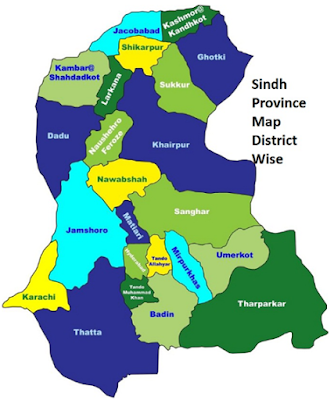The Western Mountains
• The Western Mountains consist of many parallel ranges and are not as high as the Northern Mountains
Safed Koh Ranges up to 4712 meters
Waziristan Hills up to 3513 meters
Sulaiman Range up to 3383 meters
Kirthar Hills up to 2174 meters
Safed Koh Ranges (Height up to 4712 meters)
Location:
• The Safed Koh Ranges are located in an east west direction south of the Kabul River.
Topography:
• They are called Safed Koh (White mountains) because their peaks are often covered with snow.
• They also have limestone ridges
Drainage:
• River Kurram flows to the south of this range and the Kurram pass provides a route into Afghanistan.
Valleys of Kohat and Peshawar
• The Kohat Valley is located at the other end of the Kurram Pass.
• It is dotted with springs and a number of limestone ridges.
• With the help of irrigation, the valley is farmed.
• Wheat, rice and sugar-cane are cultivated there.
• Another valley in this region is the Vale of Peshawar, drained by the rivers Kabul and Swat.
• It is a fertile, alluvial plain irrigated by canals originating from the Warsak Dam on the River Kabul.
Special Feature or Importance
• They offer route to Afghanistan through Kurram pass
Waziristan Hills (Height up to 3513 meters)
Location:
• The Waziristan Hills are located between the Kurram and the Gomal rivers.
• Along with the Safed Koh Ranges, these hills form a rampart between Pakistan and Afghanistan.
Topography
• They are devoid of vegetation
Drainage
• The Kurram dam on the Kurram river is the main source of irrigation water.
Bannu Valley
• The Bannu valley is located to the east of the Waziristan Hills
• Bannu, near the Tochi Pass, and Dera Ismail Khan, near the Gomal Pass, are important towns and military centres.
• The Bannu valley is a low-lying basin bordered by hills and mountains and drained by streams, with braided channels (see Fig.1.35b).
• The valley has deposits of clay and boulders brought down by streams.
Special Feature
• They lie in a highly, mineralized (rich in mineral) zone.
Sulaiman (Height up to 3383 meters)
Location:
• Sulaiman Range is located towards the west of the River Indus.
Topography
• They are composed of limestone, sandstone and shaly rocks
Special Feature
• Takht-i-Sulaiman, at 3383 meters is the highest peak in the Sulaiman Range.
• Further south it meets the Kirthar Range, which is backed by the Pab Range.
Kirthar Ranges (Height up to 2174 meters)
Location
• It lies on the west of River Indus in Sindh
Drainage
• The area is drained by river Hab and river Lyari
Precipitation and Rainfall
• The area is devoid of vegetation due to very less rainfall
Special Feature
• It forms a border between Sind Plain and Baluchistan Plateau
Special Feature of Western Moutains - Passes
Khyber Pass: leads to the fertile Vale of Peshawar
Wide enough to facilitate the passages of troops
Kurram pass: A route to Afghanistan
Tochi Pass: Connects Gazhni to Bannu
Gomal Pass: Connects Afghanistan to Derajats
Bolan Pass: Connects the Kachchi Sibi Plain to Quetta
Economic Activities and Lifestyle in the Western Mountains:
Agriculture
• The Western Mountains are mostly bare of vegetation.
• The climate and relief do not support farming.
Drainage
• Canal irrigation is not possible because of the mountainous terrain and rugged landscape.
Impact on people
• Transportation facilities are limited.
• Except for a few urban centres like Peshawar and Kohat, the rest of the area is not connected by air or rail networks.
• Only a few areas are accessible through main (metalled) roads.
• Most of the areas are accessible only by unmetalled roads.
• Life in the Western Mountains is difficult because of the rugged landscape.
• The cost of supplying infrastructure - water supply, transport facilities, electricity, and telephone lines is much higher than in the plains.
• As a consequence developmental projects, e.g. mining activities, industries, educational facilities, have not been established.
• These factors adversely affect the lives of the inhabitants.
• They are deprived of even the basic necessities of life.
• Nomadic lifestyle is common and sheep and goat rearing is the main occupation.
• The population density is lower than 100 persons per sq. km.
• There are abundant mineral resources in the Western Mountains but due to the difficulty of extracting them, they have not been explored or exploited.

































